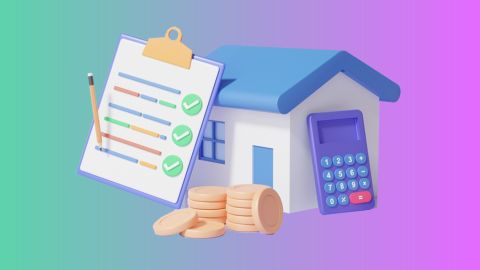By keeping all the documents ready, you can leverage the value of your property to avail of funds for various purposes, such as business expansion or home renovation with Bajaj Finserv Loan Against Property. The process is simple, and you can check your eligibility easily and use the EMI calculator and apply for loan in a few easy steps.
In this article, we will explore what a grant deed is, its key features, the differences between a grant deed and other deeds, and how to create and execute one.
What is a Grant Deed?
A grant deed is a legal document used to transfer ownership of real property from one individual or entity to another. This document includes two significant guarantees from the grantor (the current property owner). Firstly, it ensures that the grantor holds a legitimate title to the property being transferred. Secondly, it guarantees that the property is free of any encumbrances or claims that are not already disclosed to the grantee (buyer).Grant deeds are commonly used in property transactions, assuring the buyer that they are receiving a valid title and clear ownership. Unlike other types of deeds, such as quitclaim deeds, a grant deed offers specific legal protections to the buyer.
Key Features of a Grant Deed:
- Legal title transfer: A grant deed formally transfers ownership of a property from the grantor to the grantee.
- Assurance of clear title: It guarantees that the grantor holds a valid title and has the legal right to transfer it.
- Encumbrance-free property: The deed confirms that the property is free of undisclosed liens or legal claims.
- Documented in public records: Once executed, a grant deed is filed with the local county office, making it part of the public record.
- Protects the grantee: It provides the grantee with legal recourse if the grantor fails to uphold the guarantees mentioned in the deed.
Differences Between Grant Deeds and Other Deeds
While a grant deed offers legal protection to the buyer, other types of deeds function differently. Here is a comparison to understand the distinctions:| Type of Deed | Description | Legal Protections |
| Grant Deed | Transfers ownership with guarantees about title and freedom from encumbrances. | Offers legal protection against title issues. |
| Quitclaim Deed | Transfers ownership without any guarantees. | Offers no protections; transfers "as is". |
| Warranty Deed | Provides the highest level of guarantees regarding ownership and freedom from encumbrances. | Strongest legal protection for the grantee. |
Grant deeds lie between quitclaim and warranty deeds in terms of protection, providing limited but essential guarantees to the grantee.
How to Create a Grant Deed?
Creating a grant deed is a straightforward process but requires attention to detail. The deed must clearly identify the grantor and grantee, describe the property being transferred, and include the specific language necessary to convey ownership. Typically, the grant deed must be signed by the grantor and acknowledged before a notary public. Once completed, it should be recorded at the local county office to make the transfer official.Steps Involved in Executing a Grant Deed:
- Draft the deed: Ensure that the grantor and grantee details are correct, along with the property description.
- Review the title: Verify the property’s title to confirm it is free from encumbrances.
- Sign in the presence of a notary: The grantor must sign the deed before a notary public to make it valid.
- Record the deed: File the grant deed with the local county recorder's office for it to become part of the public record.
- Deliver the deed: The grantor must deliver the deed to the grantee to complete the process.
Importance of Grant Deeds in Real Estate Transactions
Grant deeds play a critical role in real estate transactions by providing legal protection and transparency. They ensure that the property being transferred is free from hidden claims or liens, allowing the grantee to take ownership without concerns about future disputes. The assurance provided by a grant deed gives buyers confidence and reduces the risk of legal challenges.When dealing with complex transactions or errors in legal documents, the process of creating a rectification deed may also come into play.




